Understated beauty, edibility, and excellent wildlife value make spicebush, Lindera benzoin, a winner for the backyard and for the wild plant forager. Twigs, berries, and leaves are useful edibles. Native Americans used this plant both for food and for medicine. I made a tea with the twigs here. Read on for identification tips, traditional uses, and my spicebush ice cream recipe.
This post contains links to online shopping, which is a way for you to support One Acre Farm at no additional cost to you. Click here for my full affiliate disclosure. Thanks for your support!
Foraging for spicebush
Note: Correct identification is extremely important when foraging for edible wild plants. Be sure to double and triple check with authoritative sources, and preferably an edible wild plants expert. If in doubt, do not eat it.
General
Spicebush ranges throughout much of eastern North America, as you can see on its range map here. As an understory shrub of moist forests, it prefers light to medium shade and moist, rich soil. It is especially common along streams. This graceful shrub is said to achieve a maximum height of about 30 feet, but here in Massachusetts, I don’t think I’ve seen it exceed 10 feet. In spring, it is conspicuous, for the dainty yellow blooms create a subtle, golden haze. But in all other seasons, spicebush is fairly nondescript. Click photo for larger image.
Flowers
Tiny yellow flowers grow in clusters along the twigs, in mid-late April, here in Massachusetts. The early bloom time makes them particularly valuable to pollinators, which have little else available at that time. Small bees and flies are among the visitors to spicebush flowers. (See photo of flowers at top of page.)
Leaves
The oval, smooth-edged leaves are broadest beyond the mid-point, and can reach 6 inches in length, though 3-5 inches is typical. They are alternately arranged along twigs. Tearing or bruising the leaves gives off a pleasant, citrus-like aroma, and that can help you confirm the plant’s identity. Crushing these leaves and enjoying the fragrance is one of the many pleasures of hiking in moist, rich woodlands.
Traditional uses: The Chippewa Indians used the leaves to make tea, and also as a flavoring for naturally strong flavored meats. The Iroquois used the leaves in combination with twigs to make an infusion for colds and measles.
Wildlife also make use of the leaves. Larvae of the spicebush swallowtail butterfly, eastern swallowtail butterfly, and promethea moth feed on the leaves
Bark
Knowing the appearance of the bark is helpful for winter identification of spicebush. It is gray-brown with little whitish bumps (lenticels). Once you learn to recognize this bark, it’s fairly easy to pick out in the winter landscape. Click photo for larger image.
Traditional uses: Spicebush bark was used by the Iroquois to make medicines for measles, croup, and syphilis.
Berries
Spicebush berries are fleshy, oval, and bright red when ripe (September, here in Massachusetts). But only female plants produce these berries. The berries can be used to make a spice that’s said to resemble allspice. But I don’t use them, because I’ve never seen them produced in abundance, and I harvest only what is abundant. Thrushes and upland game birds eat these berries.
If you want to use spicebush berries and you live where this plant will grow, consider planting it in your yard. FYI, I have read numerous times that spicebush berries quickly go rancid when dried, due to their high fat content. They may also lose their flavor when dried.
Winter twigs
Winter twigs of spicebush harbor obvious roundish flower buds. Scraping the twigs releases the same citrus-like scent that crushing the leaves does. The Cherokees used the twigs to make tea as a pleasant beverage, and to flavor opossum and woodchuck meat. I’ve made this tea and it is excellent. How I do it is detailed here. I use the same method to imbue ice cream with this delicious citrusy flavor, in the spicebush ice cream recipe below.
Traditional uses: Some Native American tribes used the twigs, sometimes in combination with leaves or bark, to make various medicines for colds, aches, pains and fevers.
Spicebush ice cream with sour cream
This is a nice way to enjoy spicebush, and your friends will never guess the flavor! It’s a good ice cream to make during the winter months for several reasons:
- Spicebush twigs are one of the few edible wild plants to forage during winter in cold, snowy climates.
- The ice cream is egg-free, which is great during this season of low egg production (especially if, like me, you have old hens).
- You can cool the base out in a snow bank (my favorite method!!).
In this recipe, the refreshing, citrus-like flavor of spicebush, is nicely balanced with the subtle tang of the sour cream. Creme fraiche would be a wonderful sour cream substitute. If you don’t have either sour cream or creme fraiche, you could use an extra 1/2 cup of heavy cream. I’m sure it will be delicious, but you won’t get that tang.
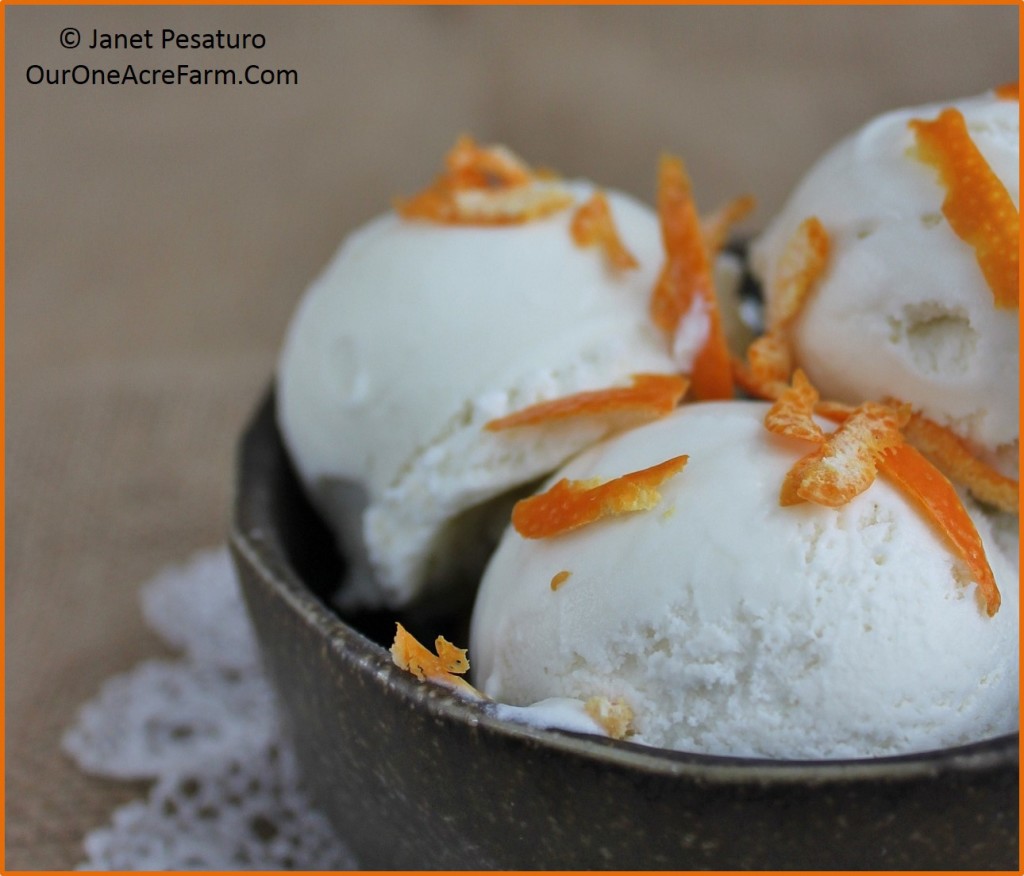
Easy to make, delicious spicebush ice cream with sour cream – a great winter dessert with a foraged wild edible.
Makes about 1 quart
- 1 cup whole or lowfat milk
- 4 tsp freshly picked, chopped (into 1/4 inch lengths) spicebush twigs
- 2 cups heavy cream
- 1/2 cup sour cream
- 2/3 cup sugar
- 2 tbsp tapioca syrup (can substitute with corn syrup)
- Heat milk over medium heat, stirring frequently, until it’s bubbling around the edges and beginning to steam.
- Remove from heat and add the chopped twigs. Cover, and let steep for 30 minutes.
- Strain the milk to remove the twigs; discard the twigs.
- Add the milk and all remaining ingredients into a food processor or blender. Process until smooth.
- Chill thoroughly in refrigerator for at least 3 hours or overnight.
- Churn in ice cream maker according to manufacturer’s directions.
- Transfer to 1 quart storage container and store in freezer.
Serving suggestions: It’s wonderful with hot fudge sauce a few hazelnuts, and a garnish of orange zest. Or, stir in 3/4 cup chocolate chips as you transfer to storage container. Enjoy!
Sources:
- Gleason, H. A. et al. 1991. Manual of Vascular Plants of Northeastern United States and Adjacent Canada. New York Botanical Garden.
- Homgren, N. H. et al. 1998. Illustrated Companion to Gleason and Cronquist’s Manual: Illustrations of the Vascular Plants of Northeastern United States and Adjacent Canada.
- Moerman, D. E. 1998. Native American Ethnobotany. Timber Press. Portland, OR. New York Botanical Garden.











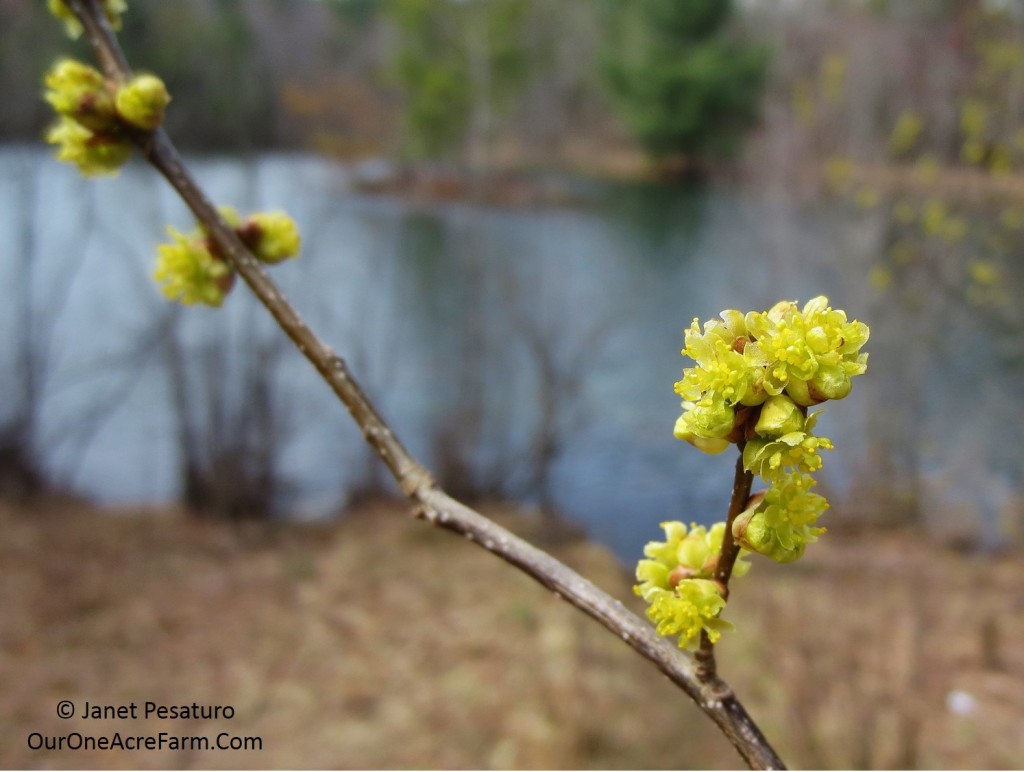
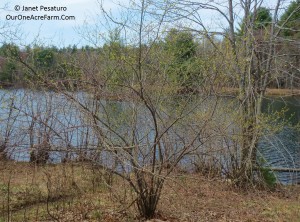
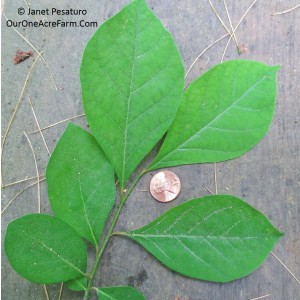

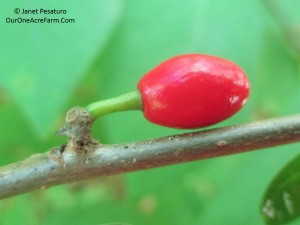
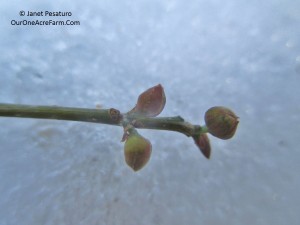
Thanks, Janet, the passion, effort, and high-quality photos are much appreciated. As a late to the show (57) noob forager, yours is a great resource for wild edible identification.
Spice bush does not have opposing leaves as stated in your description.
You are right, that was an error, and I just corrected it. Thanks.
Spicebush is an amazing but forgotten spice. Our woods has several bushes that get loaded with berries although many bushes only produce a few fruits. The fruit is said to taste like allspice but I think a combination of bay leaf, cardamom and black pepper is closest. I use the berries in stocks, preferring to add at the end after crushing in a blender with a little water. Much like bay leaf, the berries add a subtle taste to the stock and helps round out the flavor. But the best use is the twigs in winter made into ice cream. The flavor is unique and delicious- I don’t think it is close to anything else. Describing the flavor is like trying to describe the flavor of cinnamon to someone that has never tasted cinnamon before- it just has a unique taste. I think the crushed leaves smell a little like Old Spice aftershave lotion. But your version of the ice cream sounds great with the sour cream. I can’t wait to try it! Pawpaw cheesecake with black raspberry sauce and spicebush sour cream ice cream will now be on the Christmas dinner menu.
Can I come to Christmas dinner at your house, Keith? :). Sounds like a terrific dessert menu! I like your use of spicebush to flavor stock and will have to try that sometime. I hope you will let me know if you like the ice cream. I’ve made up many ice cream recipes over the years, some not so good, but this is one of my favorites. Perhaps I will add it to our Christmas menu this year too!